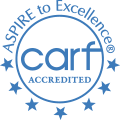Many people view drug abuse and addiction as strictly a social problem. Parents, teens, older adults, and other members of the community tend to characterize people who take drugs as morally weak or as having criminal tendencies. They believe that drug abusers and addicts should be able to stop taking drugs if they are willing to change their behavior.
These myths have not only stereotyped those with drug-related problems, but also their families, their communities, and the health care professionals who work with them. Drug abuse and addiction comprise a public health problem that affects many people and has wide-ranging social consequences. It is NIDA’s goal to help the public replace its myths and long-held mistaken beliefs about drug abuse and addiction with scientific evidence that addiction is a chronic, relapsing, and treatable disease.
Addiction does begin with drug abuse when an individual makes a conscious choice to use drugs, but addiction is not just “a lot of drug use.” Recent scientific research provides overwhelming evidence that not only do drugs interfere with normal brain functioning creating powerful feelings of pleasure, but they also have long-term effects on brain metabolism and activity. At some point, changes occur in the brain that can turn drug abuse into addiction, a chronic, relapsing illness. Those addicted to drugs suffer from a compulsive drug craving and usage and cannot quit by themselves. Treatment is necessary to end this compulsive behavior.
Treatment can have a profound effect not only on drug abusers, but on society as a whole by significantly improving social and psychological functioning, decreasing related criminality and violence, and reducing the spread of AIDS. It can also dramatically reduce the costs to society of drug abuse.
Understanding drug abuse also helps in understanding how to prevent use in the first place. Results from NIDA-funded prevention research have shown that comprehensive prevention programs that involve the family, schools, communities, and the media are effective in reducing drug abuse. It is necessary to keep sending the message that it is better to not start at all than to enter rehabilitation if addiction occurs.
A variety of approaches are used in treatment programs to help patients deal with these cravings and possibly avoid drug relapse. NIDA research shows that addiction is clearly treatable. Through treatment that is tailored to individual needs, patients can learn to control their condition and live relatively normal lives.
If you are fighting the battle against alcoholism or drug addiction, you’ve taken an important first step – you’re reaching out for help. Or certainly considering it. It’s a courageous effort. It can be a frightening one. But most importantly, you’re not alone.
If you’re calling us on behalf of a loved one who needs help coping with alcoholism or drug addiction, we’re equally prepared to support your efforts in one of the keys to dealing with addictive disease: getting the addict to acknowledge that there is a problem and that he or she needs help.
The longer an addiction goes untreated, the more of a problem it presents. Our goal is to help you deal with problems as quickly as possible, to provide meaningful, caring information that helps deal with the effects of alcoholism, drug addiction and other addictive disease.
Working around the clock, our staff is committed to working with you to determine the most appropriate referral based on the specific nature of the problem. Teenagers, for example, often seek special facilities geared to their specific needs. Women often prefer treatment centers that deal solely with females. Whatever the situation, we offer high levels of treatment experience, a broad range of caring resources, and a national bank of top-quality, highly successful facilities that reflect the utmost concern for dignity, respect and professionalism.
Addiction is a chronic, relapsing disease. It’s a complex, pervasive issue that creates a wide range of mental and physical health challenges. But it is treatable — which is why our staff of trained specialists is available to provide advice and support 24 hours a day. As in now.
We’re glad you’re here. We’re glad you’re reading these words. We’re glad you found us. Chances are, you’ve turned to this site because you or a loved one needs help in one of life’s toughest struggles. Whether it’s the struggle against alcoholism, or against drug addiction, or against any other addictive behavior, you’ve taken an important first step.
You’re looking for help.
Addictive disease plays no favorites. It uses its crippling powers to affect men and women, boys, girls, teenagers – even juveniles. And although scientific advances have contributed greatly to our understanding of alcoholism and drug addiction, that’s little consolation when you – or someone close to you – suffers from the ravages of diseases that are among the most challenging problems facing society today.
The good news is that those same scientific advances have also come a long way in helping us treat alcoholism and drug addiction. A complement to all that science, of course, is the human touch – the caring and sensitivity of people who work at drug and alcohol treatment centers and are dedicated to reaching out to those wondering where to turn next. Dedicated to helping. Dedicated to winning.
Rehabilitation comes from the Latin word rehabilare, to return home to your self (to be yourself again).
Rehabilitation is the process of recovering those capacities that have been diminished due to illness or injury. This recovery can only be sustained if the addict does not relapse or return to substance abuse. Thus, the proof of successful rehabilitation is in relapse prevention. However, rehabilitation is more than simply avoiding drugs. The goal of a drug rehab is to help clients to re-integrate into their community as productive and valued people. The Whole Person Recovery concept is a way of understanding the process of rehabilitation as a long journey. The various methods and contexts for rehabilitation – such as individual, group and family counselling, self-help groups and vocational rehabilitation – are vehicles for the journey.
But the client is not a passive passenger in these vehicles. With the help of the counsellor, he is now back in the driving seat on the new journey along his life path. The counsellor acts as a guide and shows the route, takes on board travelling companions and can even act as mechanic to ensure that the vehicles are properly maintained. The vehicles of therapy and the support of the counsellor/mechanic are essential, but the recovering person can only progress on the journey through his own participation and energies. As the client comes out of the detoxification phase of treatment you can start to lay the foundations of the rehabilitation process. Abstinence in itself is not enough. If the addict does not see the benefits of remaining abstinent she will relapse sooner or later. The recovering person needs active guidance to clarify the paths to a major change in lifestyle.
A tremendous opportunity exists to effectively change the ways in which the public understands drug abuse and addiction because of the wealth of scientific data. Overcoming misconceptions and replacing ideology with scientific knowledge is the best hope for bridging the “great disconnect” – the gap between the public perception of drug abuse and addiction and the scientific facts.










